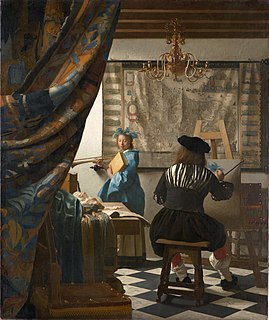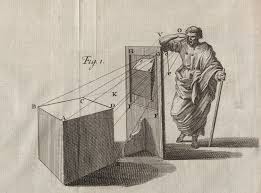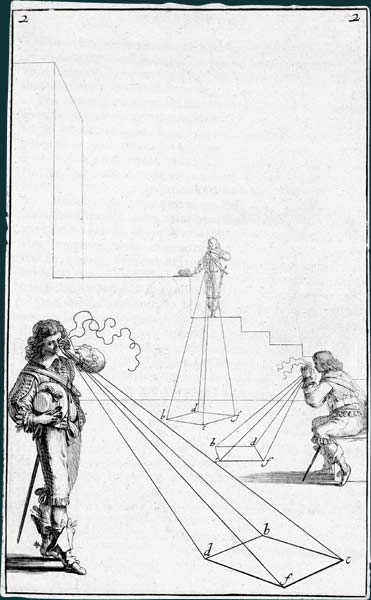Perception depends on context. From one point of view the way seems impassible. From another point of view the path is revealed. Each view is limited by its own frame. Changing frames changes perception. Changing perception changes both understanding and action.
Wiki thrives amid many simultaneous points of view.

The Art of Painting. - wikimedia ![]()
In Vermeer's The Art of Painting, we see frames within frames within frames: the viewer frame; the fabric curtain pulled aside revealing the artist's studio; the canvas beneath the artist's brush; an implicit window frame providing the light which illuminates the scene; many frames in the map on the back wall.
Consider the top left corner of the map on the back wall. The border itself contains landscapes of notable locations in the Netherlands. Within that border, but floating over the map of the territory, a particularly ornamental frame decorates what appear to be words, likely metadata about the map.
The map on the wall holds particular interest for a student of perspective and for our subject of frames. The primary subject is a map of the Netherlands, the artist's home country. The frames within frames are an homage to essential tools of the Renaissance painter.

"Man Drawing a Lute", woodcut by Albrecht Dürer (1525)—wikimedia ![]()
In Dürer's wood cut of a Man Drawing a Lute, and in da Vinci's Codex Atlanticus f. 5 recto we see how these Renaissance geniuses employed frames and points of view to great artistic purpose.

Prospettografo - wikimedia ![]()
Discovery and practice of perspective and the use of perspectival windows in the Renaissance brought mastery of not only art, but a deepening understanding of reality. See The Perspectival Eye

The perspectival image as planar section of the visual pyramid - glass-bead.org ![]() Brook Taylor, New Principles of Linear Perspective (Fourth Edition) (London: J. Taylor, 1811)
Brook Taylor, New Principles of Linear Perspective (Fourth Edition) (London: J. Taylor, 1811)
Strings and rays of light and points of view are well represented. See Les Perspecteurs Plate 2
In perspective points of view and vanishing points are tightly related.
https://dobbse.net/reflection/perspective/vp.svg HEIGHT 400 Click the Go and Stop buttons
Our first use of a wiki frame. See Vanishing Point.

